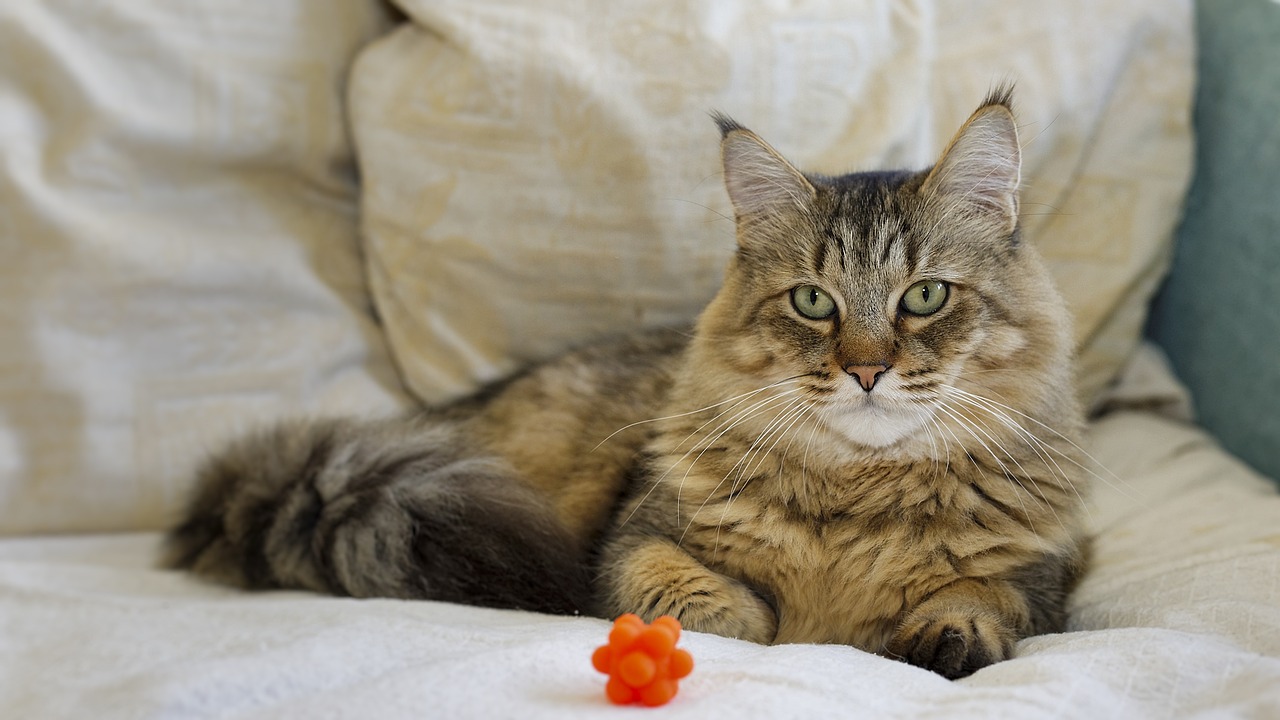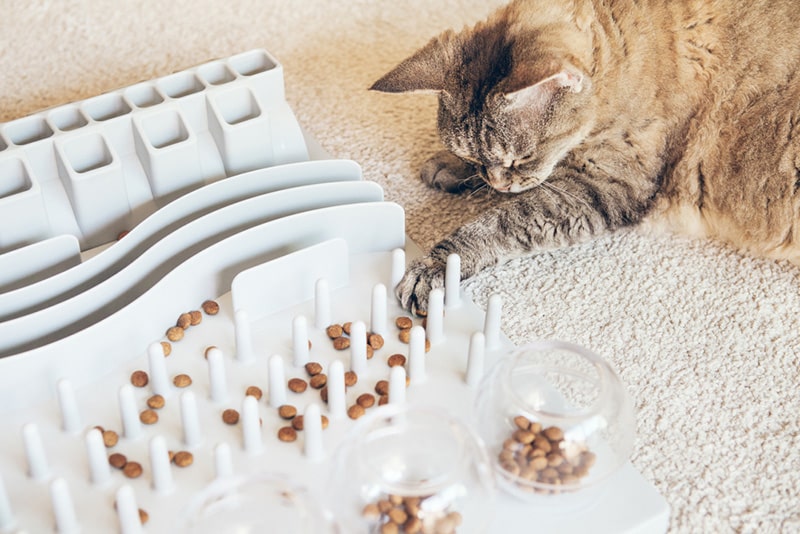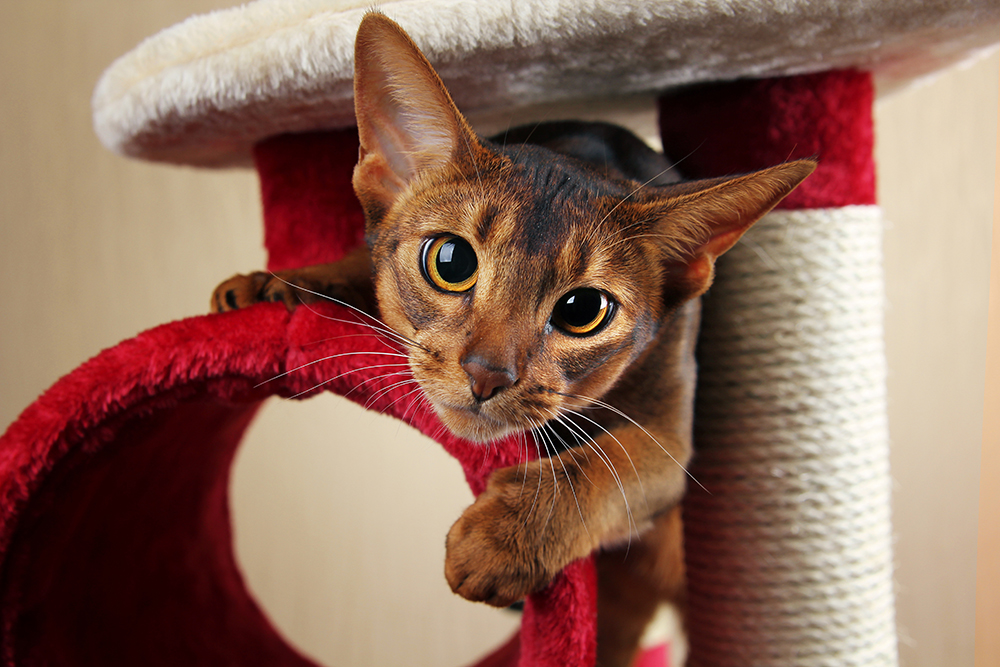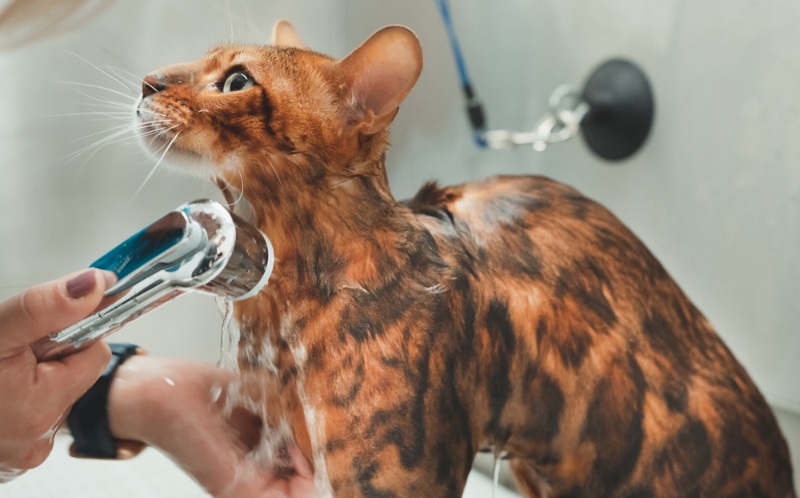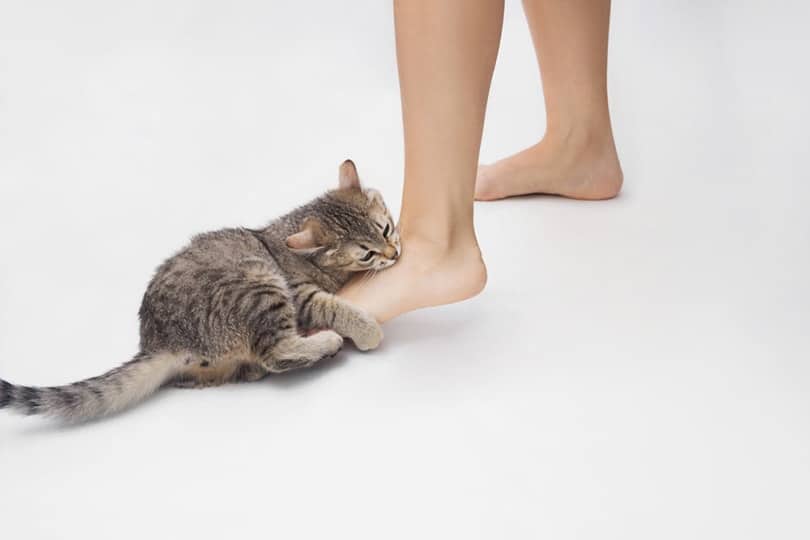Click to Skip Ahead
The idea that you could have a hybrid half cat half Bobcat is an unusually attractive feature for some people. Some folks want to have a cat that is more in tune with its wild ancestors, and since Bobcats are so prevalent in North America, some would think it makes sense that these are the cats these fanciers look up to. In this post, we will explore the idea, learn about biology, and behavior, and let you know what’s up before you spend big bucks buying a “Bobcat hybrid” kitten.

What Is a Bobcat?
“Bobcat” is the colloquial name for the Red Lynx or the Lynx rufus. They’re endemic to North America and can be found everywhere from Southern Canada down through most of contiguous America.
Bobcats can be identified by their iconic striped legs, spotted bodies, and black-tipped short, stumpy tails. The Bobcat is thriving in its original habitat range but can be susceptible to extirpation by domestic animals and coyotes.
They generally hunt rabbits and hares but have been known to hunt insects, small deer, chickens, geese, birds, and small rodents when necessary. They mark their territory using claw marks and deposits of urine and feces.
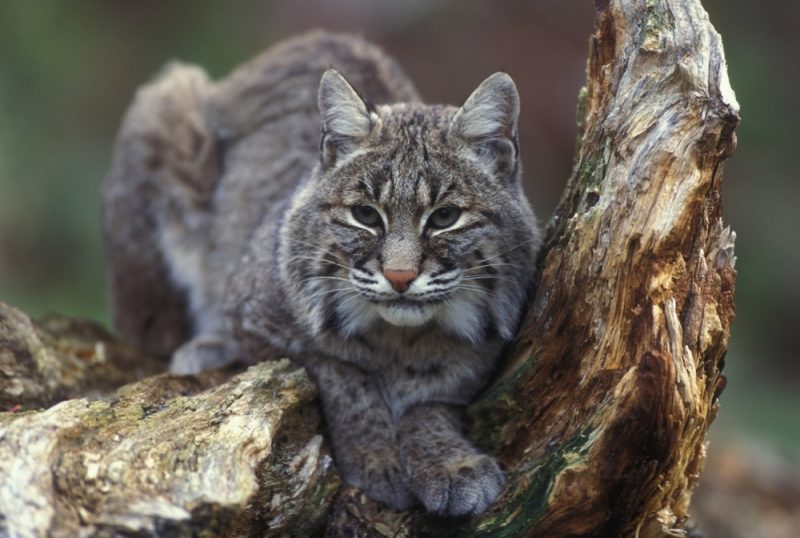
Why Is the Idea of Bobcat Hybrids Appealing?
Some people are drawn to the idea of owning a rare or unique animal. A bobcat hybrid would be seen as an “exclusive” pet, appealing to individuals interested in exotic or one-of-a-kind animals. Some people have in fact successfully kept wild animals arguing that they are hybrids. Others have taken advantage of this to make profits, knowing that either they are trading wildlife or taking advantage of physical traits naturally occurring in domestic cats.
Rocky the (Possible) Bobcat
Rocky was one such “hybrid” owned in New Jersey. His mitochondrial DNA test showed Bobcat heritage, and his mother’s DNA test showed that she was 100% Bobcat. However, a Judge who clearly did not understand biology very well ruled that DNA tests on Rocky were inconclusive, allowing him to return home since his father’s DNA could not be tested or found. However, due to his enormous size and tendency to escape and cause trouble, he has been moved to the zoo, where they will care for him with the necessary knowledge to care for such a large cat.
Pixie-Bob Cats
Pixie-Bobs are a cat breed that is supposedly a long-lasting line of bobcat hybrids. Legend has it that these cats result from an accidental litter of kittens between Pixie, a barn cat, and a Bobcat.
However, genetic testing has not confirmed claims of hybrid ancestry, and these cats are better regarded as domestic cats with a wild-like appearance. One thing is for sure: Pixie-Bobs look remarkably similar to Bobcats, and maybe that’s enough for some aspiring Bobcat parents.


Reasons Why Some Believe a Cat Is Part Bobcat
In the past, the myth of domestic cat hybrids with bobcats was widely extended. Likely in the aim to allow wild creatures to be kept as pets. However, nowadays, you can most easily tell if your cat might have some wild heritage through their physical appearance and behavior. While you could have their mitochondrial DNA tested, a negative test would break the illusion, and a positive test could result in your cat being relocated to the zoo. So, it might be worth it to just stick to what you can see.
Still, you might see some physical or behavioral traits that show some fight in your kitten! For some, the mere idea of it is more than enough.
1. Physical Traits
Bobcat kittens are easily double the size of a normal kitten, for starters. Though the term “big cat” doesn’t refer to size, Bobcats are notably larger than domestic cats, and if you notice that your cat is freaking massive, that might give some the idea that they may have wild heritage in their veins.
Additionally, Bobcats sport a distinctive spotted coat with striped legs. These stripes will be visible even on kittens. So, if your kitten is rocking those distinctive leg stripes, that is one more reason to fantasize about the idea that they might have some Bobcat heritage.
Ear and paw tufts are often mistakenly viewed as signs of Bobcat heritage, especially in shorter-haired cats. While long-haired cats frequently have ear and paw tufts, these features are common among cold-weather domestic breeds and are not exclusive to Bobcats.
To top it up, the distinctive stumpy, black-tipped tail. While this feature is iconic for Bobcats and the origin of their name, it does not confirm Bobcat heritage in domestic cats.
2. Behavioral Traits
If your kitten is overly aggressive, it is likely due to temperament, environment, or lack of socialization rather than any “wild blood.” Domestic kittens may exhibit playful behaviors that seem aggressive, but this is a natural part of their development. Wild kittens, on the other hand, are aggressive out of fear, as they have not been conditioned to feel safe around humans.
Additionally, the idea that a “Bobcat mix” may enjoy water stems from misconceptions. While Bobcats are known to swim for hunting or travel, domesticated cats vary in their comfort with water. In fact, Bobcats will normally avoid water if possible, they are known to swim across rivers or other bodies of water if needed, as a survival skill. But some domestic cat breeds are known to enjoy the water as well. A cat’s willingness to engage with water is influenced more by individual personality or exposure than any supposed wild ancestry, as domestic cats cannot hybridize with Bobcats.
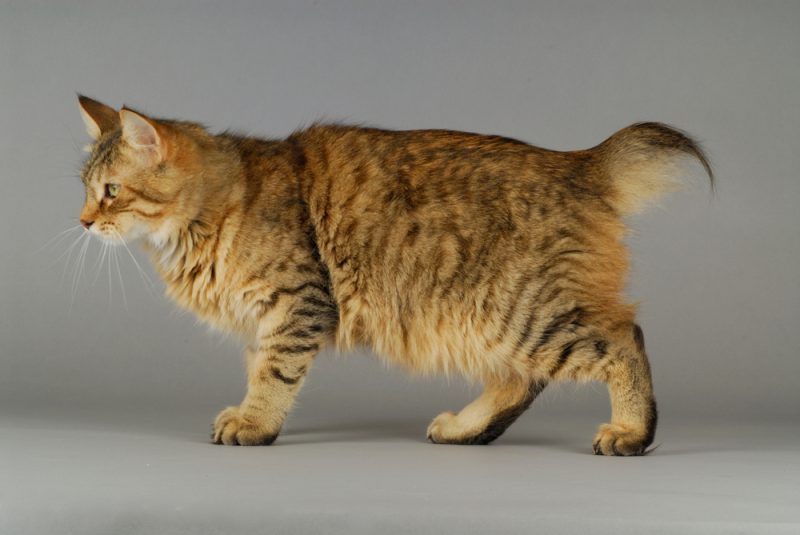

The Truth About Bobcat Hybrids
Domestic cats and Bobcats are not genetically similar, even if they look like cousins. Domestic cats (Felis catus) and bobcats (Lynx rufus) cannot interbreed. Although they both belong to the Felidae family, they are distinct species with important genetic, physiological, and behavioral differences that make hybridization biologically impossible.
One major barrier is their differing chromosome numbers, which means viable offspring can not form. Additionally, their mating behaviors, ecological roles, and natural habitats are incompatible, reducing even more the likelihood of any natural hybridization. Claims of hybrids between domestic cats and bobcats are likely based on misidentifications or myths, as there is no scientific evidence to support such occurrences.
Bobcats are wild animals and will not thrive when kept as “pets”, they are also illegal to own so Even if the idea of a companion Bobcat might seem cool and unique, it’s best left as an idea.

Final Thoughts
While looking for a Bobcat hybrid in real life may not be realistic, that doesn’t mean you can’t fantasize healthily about your cat stalking hares in the wilderness. There are many physical characteristics and behavioral traits you can look for that can nurture your fantasies that your cat’s wild heritage and there’s no harm in fantasizing!
Related Reads:
- How Long Should You Play with Your Cat? The Importance of Playtime
- Is a Maine Coon Savannah Mix Possible?
Featured Image Credit: DaveFrancis, Pixabay

